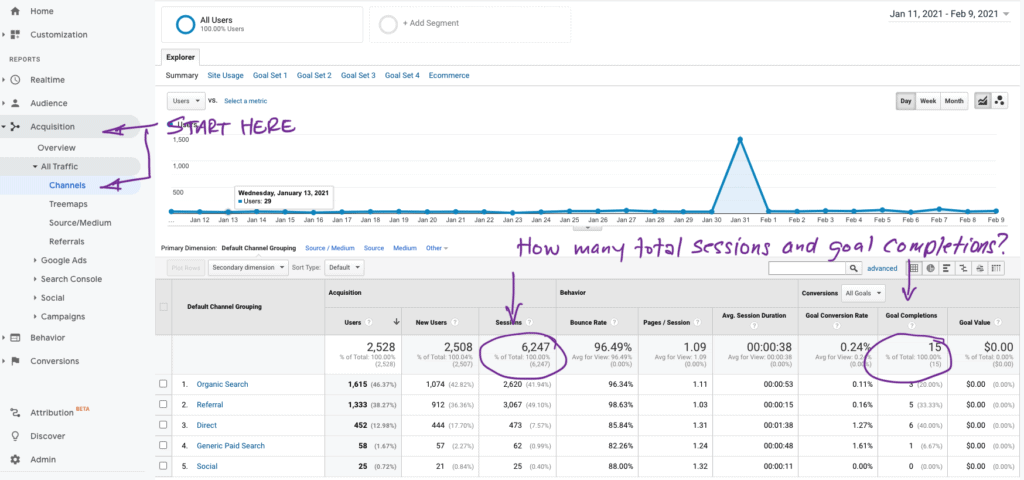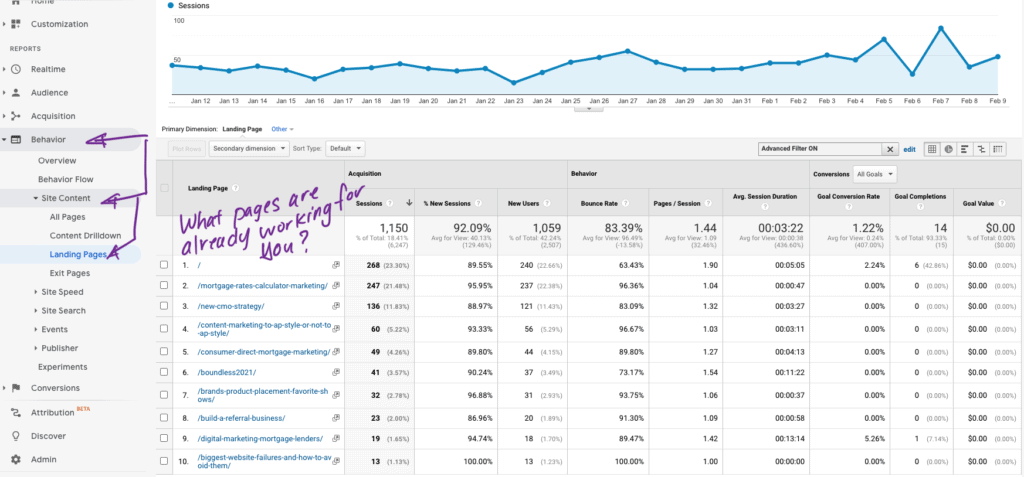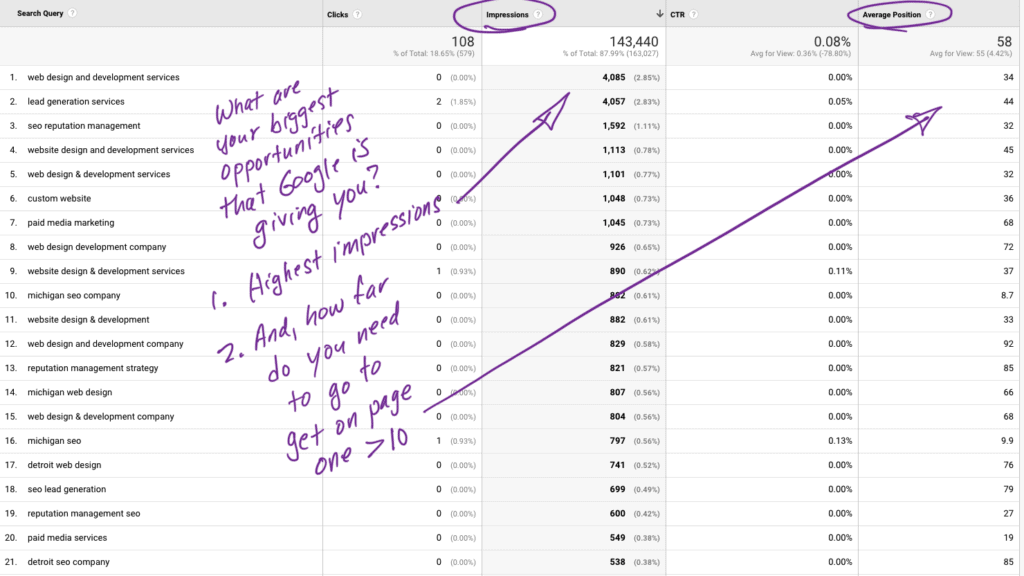What's in this article?
Congratulations! You’re a brand new marketing director.
I’m confident that your creative brain is bursting with grand strategies – ideas that are sure to grow your new company and help them hit all the revenue targets that have previously evaded them.
But, I encourage you to pause, come out of the clouds for a moment, and listen.
My experience, working with hundreds of new marketing directors, urges me to caution you, to begin with, something smaller and more tactical in the first couple of weeks.
New CMO or Marketing Director?
Don’t lose any time getting up to speed and generating a few quick wins. Reach out to us and schedule a discovery session. It’s free and we guarantee you’ll leave with at least one immediate success.
Use this 3 Step Tactical Digital Marketing Plan to ensure your digital platform is ready to launch your more significant digital strategies.
1. Assess your website
Your website is your primary digital marketing platform. Yet, I’m continually amazed at how many websites are in a state of neglect and disrepair. As a new marketing director this is very likely to be your first major challenge.
You might find, as many of our new law firm clients do, that you don’t even own your domain, website, or even the content.
So, let’s do a quick check to see if your website is ready and available to you to start running digital marketing campaigns.
- Do you own the domain name? Where is it registered? Is it set to auto-renew with a valid credit card?
- Where is your DNS hosted? Is it set up correctly?
- Where is your website hosted? Who controls/owns the web hosting? Is your website running on https:// (secure) with a valid SSL certificate?
- What is your website built on (WordPress is currently the most popular CMS)? Is your CMS software and plugins all secure and up-to-date?
2. Review Google Analytics
Assuming that you have ownership and access to your website, the next order of business is seeing what kind of audience you have to building on.
- Do you have access?
- Is it properly installed and consistently tracking?
- Are you using Google Tag Manager?
- Do you have Goals or eCommerce tracking set up?
Once you have confirmed you have access there are a few quick things you want to review inside of Google Analytics.
How much traffic do you get?
First, how much traffic do you have today? This is your current audience and opportunity for immediate lead generation.

Ideally, you also want to have Goal or eCommerce tracking set up in Google Analytics too. This will give you an instant understanding of what channels of traffic and landing pages/content are working for you – generating leads.
If you don’t have Goal Tracking set up in Google Analytics put that on your short list of immediate actions.
Learn how to set up Goals in Google Analytics.
What are your top landing pages?
Your next step should be to jump down to Behaviors in Google Analytics and review your top landing pages.

These pages are the ones getting the most traffic (web visitors) today. Again, these are landing pages that already have people coming to them. Consequently, assuming that they are pages and content that is relevant to what you do as a business (sometimes the is a bad assumption🤪), this where you want to focus your attention on generating leads.
Quick Action: Get a call to action (CTA), a web form, and a phone number on each of these pages.
Where is Google giving you opportunities?
This is your final step in Google Analytics. Assuming that you have Search Console integrated with your Google Analytics, go down to the Search Console section underneath the Acquisition section.
You should see something like the picture below.

The first thing you want to do is click on the Impressions header and resort this list to have the Search Queries with the most impressions at the top.
Now, you want to look at the Search Queries with the most impressions and then figure out how far away they are from the first page of Google searches. Anything under position 10, is off the first page. You have to be on the first page to have any shot at bringing visitors to your pages for those keywords.
The important part of this review is that it will quickly give you a short list of your most valuable and worthwhile content and SEO project.
Quick Action: Figure out which pages are getting these impressions and work on rewriting, lengthening, and improving these pages to get them ranking higher.
To find out which pages are getting these impressions take a look under this same section by clicking on Landing Pages. You will get a list that looks kind of like this.

This is your short list of pages to focus on improving and moving to the first page of Google searches.
3. Review Google Search Console
Your last step in reviewing and assessing your digital marketing platform is making sure that Google knows about you, thinks that your website is safe and healthy, and performing to its high standards.
Undoubtedly, your Search Console is not setup up. If you need help, here is how to set up Search Console.
Once you have your website added to Search Console, review the following:
- Do you have access?
- Is it connected to Google Analytics?
- Is your website indexing properly in Google?
- Are there any errors?
- Is your website getting important impressions and reasonable clicks and rankings?
Much of this might sound a bit technical and confusing, but it’s the foundation of your digital marketing platform and success.
Too often organizations overlook the importance of this platform and find that their digital assets are owned, mismanaged, or rendered ineffective by another entity or agency.
If you’re a brand new marketing director and have any questions, please reach out to us.
Photo by Damir Kopezhanov on Unsplash

